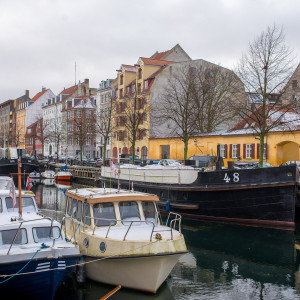The support for Bernie Sanders among young people has stirred a debate about the merits of the American style of a market economy versus the European version, and particularly the Nordic version of capitalism seen in Denmark.
Of course, the chances that Sanders will actually become president are remote and the chances of his enacting his program, if he were to become president, are even more remote. Still, the debate is an interesting one. David Brooks (writing in his New York Times column February 12, 2016) says that Denmark and similar economies in Europe are stagnant and lack the dynamism of America. Sanders’ supporters wrote in response, pointing to the strengths of Denmark: the absence of extreme poverty, the guaranty of good quality health care, and the availability of free college education.
Denmark gets a lot of things right. It provides universal health care of high quality at only a fraction of the cost of the U.S. system. Health outcomes are at least as good as in the United States with Danish wait-times similar to those we have here and infant mortality much lower. Denmark also does well in its primary and secondary education and in its labor market programs. They use tough love on those who are out of work, providing generous income support and training, but if they do not find a job or accept one that is found for them, the unemployed lose their benefits. The Danish “flexicurity” system is much admired because it combines a flexible labor market with income security. People are not guaranteed to keep the job they are in, but they are pretty much guaranteed that they can have a job.
Brooks is correct in pointing to the negative impact of very high tax rates on work. In the Nordic economies and in Germany, the employment rate is high but people work a lot fewer hours than workers in the U.S. On average, employed workers work 1,788 hours a year in the U.S. and only 1,438 in Denmark, and even less in Germany at 1,363, according to the OECD. Of course the Europeans are choosing to work shorter hours, but that choice is made in the face of very high taxes. Consider a busy professional couple in Denmark who want a renovation done to their home. They take home only a fraction of their salary after paying taxes and then they pay a plumber or an electrician to work on their house, and each of these tradespeople gets to keep only a fraction of what they charge for their services. The couple may find it is better to forget about the renovation, or hire people off the books to avoid the prohibitive double taxation.
In terms of innovation, Europe does not have the equivalent of Silicon Valley or the innovation hubs around Cambridge, Massachusetts, or the National Institutes of Health in Maryland. These creative centers generate innovations made in the U.S. that spread around the world and benefit everyone. Denmark is too small to sustain such centers by itself, but the problem extends to Europe more broadly, where policymakers struggle to match American innovation. Brooks is also correct about the danger of universal free college education. Those who graduate from four-year colleges will usually be in the upper half of the income distribution and should not expect to get a free ride from taxpayers who are making far less themselves. At the same time, creating broad financial support to allow children from low-income families to attend college while avoiding crippling debts is absolutely the right policy.
The U.S. is an exceptional country with a dynamic and successful economy. Europe would profit from copying the innovation culture of America. American capital markets, notwithstanding the financial crisis, are much more efficient than those in Europe and offer financial support and mentoring to start-up companies. Going the other way, America could learn about ways to retrain workers and avoid the desperate poverty that afflicts too many of our citizens. We could learn about the benefits of negotiating for lower prices from doctors, hospitals and drug companies. Whoever wins the White House should be secure in their belief about America’s strengths and vitality, while admitting that we can learn from what other countries do well.

